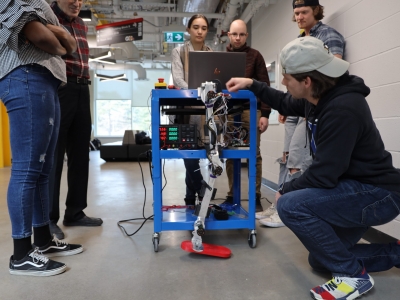From Geophysical Prospecting | October 21, 2013
Carleton University and Sander Geophysics are developing an unmanned aircraft system (UAS) for aeromagnetic surveying. As an early indication of the expected performance of the unmanned aircraft system, a simulated unmanned aircraft system (sUAS) was built. The simulated unmanned aircraft system is a T-shaped structure configured as a horizontal gradiometer with two cesium magnetometers spaced 4.67 m apart, which is the same sensor geometry as planned for the unmanned aircraft system. The simulated unmanned aircraft system is flown suspended beneath a helicopter.
An 8.5 km2 area in the Central Metasedimentary Belt of the Grenville Province, near Plevna, Ontario, Canada, was surveyed with the simulated unmanned aircraft system suspended 50 m above ground. The survey site was chosen on the basis of its complex geological structure. The total magnetic intensity (TMI) data recorded were compared to that obtained during a conventional fixed-wing survey and a ground survey. Transverse magneto-gradiometric data were also recorded by the simulated unmanned aircraft system.
The simulated unmanned aircraft system total magnetic intensity data have a higher resolution than the conventional fixed-wing data and were found to have a similar resolution to that of the ground survey data. The advantages of surveying
with the simulated unmanned aircraft system were: (1) the acquisition of a detailed data set free of gaps in coverage at a low altitude above the terrain and (2) substantial saving of time and effort.
In the survey site, the 4.67 m simulated unmanned aircraft system gradiometer measured the transverse magnetic gradient reliably up to an altitude of 150 m above ground.



